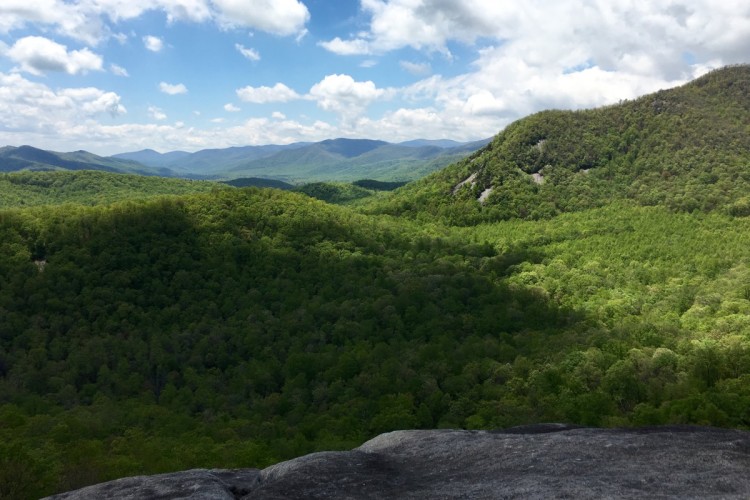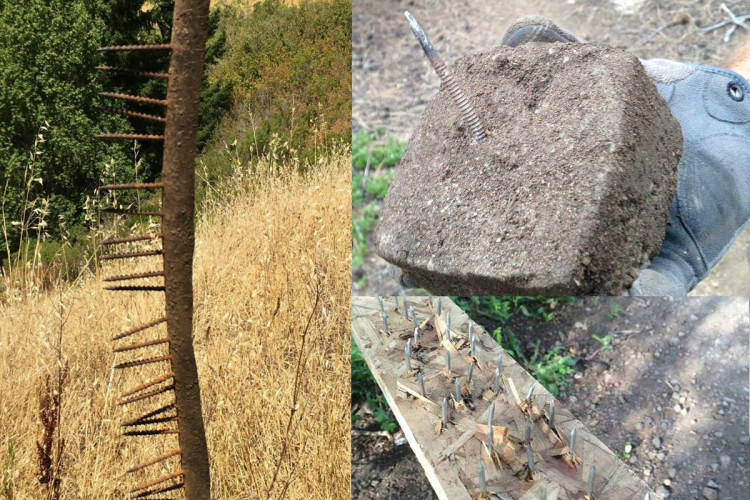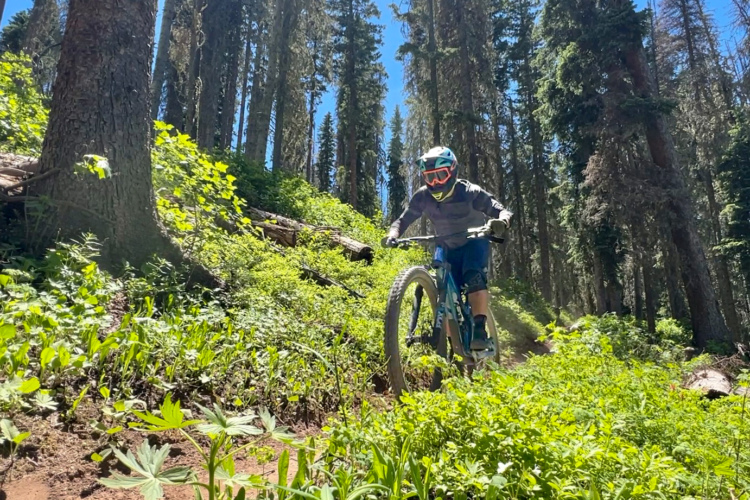In keeping with the wild and wacky ways of our government, the recently-passed 2015 National Defense Authorization Act (the law which authorizes military spending) included some unrelated riders. One such attachment was the Columbine Hondo Wilderness Act, which establishes the Columbine Hondo Wilderness in the area between Taos and Red River, New Mexico.

One unprecedented feature of the bill is the redrawing of an existing Wilderness boundary to move a portion which was inside the boundary, outside of it. The Wheeler Peak Wilderness lies immediately south of Columbine Hondo, separated by New Mexico Highway 150, Forest Road 58, and Taos Ski Valley. The Lost Lake Trail, which lies mostly outside the existing boundary with a couple miles just inside the boundary, when combined with the East Fork Trail, would make a superb high alpine mountain bike loop and, thanks to this legislation, it can now be done legally. This adjustment makes a correction to one instance of what is an abuse of Wilderness designation—the rendering off limits of miles of singletrack which lie outside Wilderness by making the Wilderness boundary reach out and grab some small portion of that trail.

IMBA and many other agencies involved with the crafting of this legislation are understandably trumpeting the success of this wonderful compromise. However, not all is rosy in MTB-land. The Columbine Hondo Wilderness contains 75 miles of singletrack which is now permanently off limits to mountain biking. In what is becoming a disturbing trend, IMBA and others rave about “compromises” which are in effect significant net losses. Among the many losses is the Goose Lake Trail, a singletrack route which has been ridden by cyclists for decades. This route was such a part of New Mexico mountain biking that it was even an entry in the Falcon Guide Mountain Biking Northern New Mexico: A Guide to the Taos, Santa Fe, and Albuquerque Areas’ Greatest Off-Road Bicycle Rides by Bob D’Antonio, first published in 2004. Cyclists will still be able to access Goose Lake legally, but only by taking a jeep road which still exists as a narrow stem protruding into the Wilderness Area.

The Rocky Mountain Front Heritage Act, which places the gorgeous cycling route at Rierdon Gulch in Montana off limts, was also attached to the NDAA. At least the Columbine Hondo Act actually granted cyclist something they didn’t already have in exchange for what they were giving up, even if the losses far outweighed the gains. However, as is more often the case, the RMFHA simply took a great route and offered nothing in return save for a promise to study opportunities for cycling access sometime in the future. So there may be a study, that study may or may not recommend new trail for cyclists (I don’t believe for a minute this won’t have the same level of anti-bike advocacy that the Act itself had), and even if the recommendation is positive, the project will have to pass a lengthy EPA review, and then the USFS will have to find the money to actually execute the project (fat chance in the modern fiscal environment), and then take the time to actually do the work. The anti-cycling forces tout this as some great compromise and even act like they have given some great sacrifice in even allowing this potential of a possibility of a maybe somewhere in the distant future into the bill in the first place. Meanwhile, the loss of great singletrack is immediate and presumably permanent like the recent loss of so many other great routes in the Big Sky State.
For more on the magnificent Rierdon Gulch ride, check out this blog:
http://aspiringadventures.blogspot.com/2013/07/riding-rocky-mountain-front.html





















12 Comments
Jan 2, 2015
Also, I think it's worth noting that while you can now complete a loop, was there any reason you couldn't have enjoyed at least MOST of that trail via an out-and-back route before? I know out-and-backs aren't the most fun, but losing 75 miles of trail so you can gain the ability to turn one other trail into a loop? Yeah, the math just isn't adding up here...
Jan 8, 2015
Jan 3, 2015
Jan 6, 2015
On the plus side in your neck of the woods was the way that the powers that be agreed on a means of protecting your beautiful Boulder-White Cloud area for future generations without slapping it with the bib 'W' and excluding the eequally conservation-minded cyclists who have frequented those trails for decades. That is a model everyone should follow. We should hold it out as a precedent every opportunity we get!
Jan 2, 2015
I have not done any research into it, but I heard that the Green and Rierdon Gulches were not part of the bill, just the connection between them. Unfortunately, I don't know enough about the location of the trails to verify it myself. I missed out on riding it this year due my crash.
Jan 8, 2015
I checked my topos + Google Earth. There is a route starting just north of Bull of the Woods Mtn. and connecting with the Lost Lake trail just above the Middle Fork Lake waterfall. The stretch is about 1 mile and drops about 500 ft from BOW. However it is x-c and would require building some kind of a trail.
Mar 4, 2016
Mar 4, 2016
Jan 2, 2015
Jan 7, 2015
Mar 4, 2016
Jan 8, 2015
I've not been able to find out how that is to be done either, but I may have an idea. My Sky Terrain trail map of the area shows a current non-system trail that runs from the end of Bull of the Woods road to the end of the road extending from FS58 (coming out of Red River going past the campgrounds and extending past the West Fork Trailhead).
The actual loop would consist of FS58, FS 58a (east fork road), East Fork Trail (56), Lost Lake Trail (91) and Middle Fork Trail (487). The connection from TSV would simply be the stem on the lollipop. I think it's being described as a loop from TSV simply because that's where they think most folks would ride from.